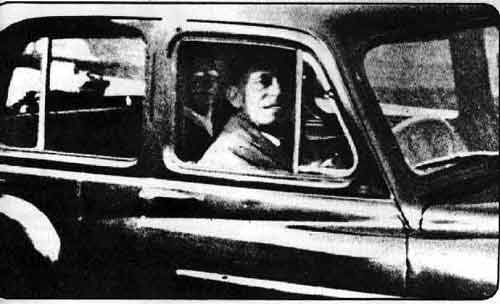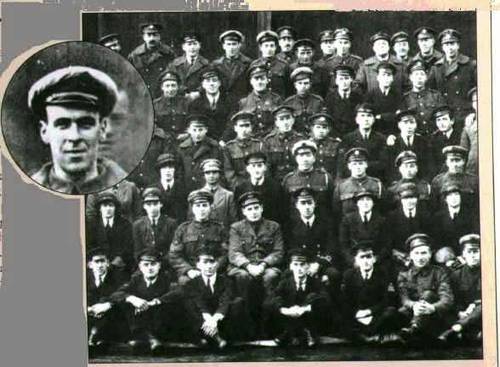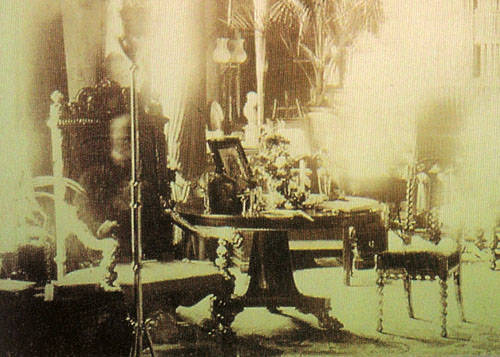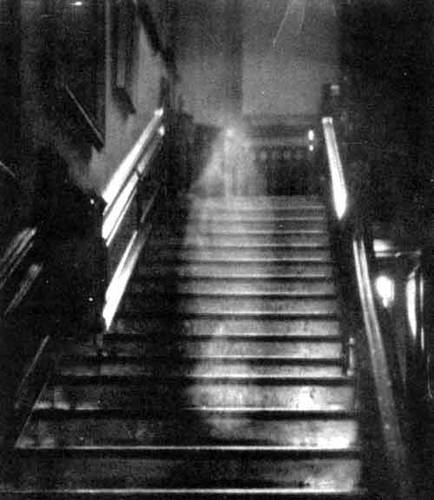
When the film was developed, the couple was more than surprised to see a figure wearing glasses sitting in the back seat of the car. Mrs. Chinnery immediately recognized the image of her mother – the woman whose grave they had visited on that day. A photographic expert who examined the print determined that the image of the woman was neither a reflection nor a double exposure. "I stake my reputation on the fact that the picture is genuine," he testified.

Interesting side note: This photo isn't the only evidence of ghostly activity at the Queen's House. The 400-year-old building is credited with several other apparitions and phantom footsteps even today. Recently, a Gallery Assistant was discussing a tea break with two colleagues when he saw one of the doors to the Bridge Room close by itself. At first he thought it was one of the lecturers. "Then I saw a woman glide across the balcony, and pass through the wall on the west balcony," he said. "I couldn't believe what I saw. I went very cold and the hair on my arms and my neck stood on end. We all dashed through to the Queen's Presents Room and looked down towards the Queen's Bedroom. Something passed through the ante-room and out through the wall. Then my colleagues all froze too. The lady was dressed in a white-grey colour crinoline type dress."
Other ghostly goings-on include the unexplained choral chanting of children, the figure of a pale woman frantically mopping blood at the bottom of the Tulip Staircase (it's said that 300 years ago a maid was thrown from the highest banister, plunging 50 feet to her death), slamming doors, and even tourists being pinched by unseen fingers.

Interesting side note: In 1935, Sir Victor Goddard, now a Wing Commander, had another brush with the unexplained. While on a flight from Edinburgh, Scotland to his home base in Andover, England, he encountered a strange storm that seemed to transport him through time into the future. You can read more about his experience in the article "Time Travelers"under the section "Flight Into the Future."

Lord Combermere was a British cavalry commander in the early 1800s, who distinguished himself in several military campaigns. Combermere Abbey, located in Cheshire, England, was founded by Benedictine monks in 1133. In 1540, King Henry VII kicked out the Benedictines, and the Abbey later became the Seat of Sir George Cotton KT, Vice Chamberlain to the household of Prince Edward, son of Henry VIII. In 1814, Sir Stapleton Cotton, a descendent of Sir George, took the title "Lord Combermere" and in 1817 became became the Governor of Barbados. Today the Abbey is a tourist attraction and hotel.
Lord Combermere died in 1891, having been struck and killed by a horse-drawn carriage. At the time Sybell Corbet took the above photo, Combermere's funeral was taking place some four miles away. The photographic exposure, Corbet recorded, took about an hour. It is thought by some that during that time a servant might have come into the room and sat briefly in the chair, creating the transparent image. This idea was refuted by members of the household, however, testifying that all were attending Lord Combermere's funeral.
Interesting side note: Lord Combermere is connected to another well-known paranormal story: the famous "Moving Coffins" of Barbados. The coffins inside the sealed vault of the Chase family are said to have been moved about by unnatural forces. The heavy coffins were repeatedly put in proper order, but often when a new coffin was added to the vault, the coffins were found strewn about. Lord Combermere, while governor of Barbados, had ordered a professional investigation of the mystery.

Dorothy's ghost is said to haunt the oak staircase and other areas of Raynham Hall. In the early 1800s, King George IV, while staying at Raynham, saw the figure of a woman in a brown dress standing beside his bed. She was seen again standing in the hall in 1835 by Colonel Loftus, who was visiting for the Christmas holidays. He saw her again a week later and described her as wearing a brown satin dress, her skin glowing with a pale luminescence. It also seemed to him that her eyes had been gouged out. A few years later, Captain Frederick Marryat and two friends saw "the Brown Lady" gliding along an upstairs hallway, carrying a lantern. As she passed, Marryat said, she grinned at the men in a "diabolical manner." Marryat fired a pistol at the apparition, but the bullet simply passed through.
This famous photo was taken in September, 1936 by Captain Provand and Indre Shira, two photographers who were assigned to photograph Raynham Hall for Country Life magazine. This is what happened, according to Shira:
"Captain Provand took one photograph while I flashed the light. He was focusing for another exposure; I was standing by his side just behind the camera with the flashlight pistol in my hand, looking directly up the staircase. All at once I detected an ethereal veiled form coming slowly down the stairs. Rather excitedly, I called out sharply: 'Quick, quick, there's something.' I pressed the trigger of the flashlight pistol. After the flash and on closing the shutter, Captain Provand removed the focusing cloth from his head and turning to me said: 'What's all the excitement about?'"
Upon developing the film, the image of The Brown Lady ghost was seen for the first time. It was published in the December 16, 1936 issue of Country Life. The ghost has been seen occasionally since.